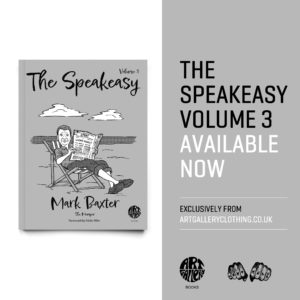
I recently caught a documentary on the history of the Carry On films, and it’s fair to say all was not well in the land of the Double Entendre. Story after story from the stars of the franchise told of under pay, over work and little or nothing in the way of repeat fees and residuals, despite the films and compilations rarely being off our TV screens . The backbiting and general feeling of being swindled was sad to see really, but the truth is, for us punters, who knew nothing of what was really going on, the magic moments they all conjured up will never be forgotten. Time then, for the Speakeasy to have a look at its history and legacy
‘Matron, take them away!’
For over four decades, the series captivated audiences with its saucy and innuendo-laden brand of British comedy. From its humble beginnings in 1958 with Carry on Sergeant to its final instalment in 1992 with the dire Carry on Columbus, the franchise produced a remarkable 31 films, 4 Christmas specials, a stage show and its own 13 part TV series, making it one of the most successful and enduring comedy series in cinematic history.
What’s more, with its multi-talented ensemble cast, witty writing – take a bow Norman Hudis and Talbot Rothwell – and a unique blend of slapstick and seaside postcard cheek, the Carry On films continue to entertain audiences with their own brand of distinct British charm and wit.
The idea was the brainchild of producer Peter Rogers and director Gerald Thomas, who aimed to create a light-hearted and risqué comedy franchise that could appeal to a wide audience. The first, Carry on Sergeant followed a group of new National Service conscripts, and became a surprise hit, quickly setting the stage for a string of successful sequels. The films typically parodied various genres and historical periods, with titles like Carry on Nurse, Carry on Camping, and Carry on Cleo, to name but a few.
‘Has she been chaste?’
‘All over Normandy.’
All the films were made on a tight budget and nothing went to waste at Pinewood Studios in Buckinghamshire where they were filmed. Even on location, purses were gripped tight, with Camber Sands standing in for the desert in Carry on Follow That Camel and Snowdonia became the Khyber Pass in Carry on Up The Khyber.
‘Have you got a large one?’
‘I’ve had no complaints.’
Perhaps the defining features of the series was its fantastic ensemble cast, many of whom would go onto become household names such as Sid James, Kenneth Williams, Barbara Windsor, Joan Sims, Jim Dale, Bernard Bresslaw, Kenneth Connor, Hattie Jacques, Jack Douglas, Peter Butterworth and Charles Hawtrey. Their comedic chemistry and larger-than-life performances became synonymous with the brand. However, principal performers were paid just £5,000 per picture, with that fee rarely rising over the intervening years.
This was noted in Kenneth Williams diaries, where he moaned about the fee, though Peter Rogers knew what he had.
‘Kenneth was worth taking care of, because while he cost very little (&) he made a very great deal of money for the franchise.”
‘Do you mind if I smoke?’
In many instances, the films often pushed the boundaries of what was considered acceptable in mainstream comedy and while some critics dismissed the series as lowbrow, the films garnered a dedicated fanbase that appreciated their irreverent way of sticking two fingers up to those who frowned at them.
I think it’s fair to say the series of films had a significant impact on British popular culture and left an indelible mark on the comedy and they became an integral part of the British cinematic landscape, with their distinctive blend of innuendo, slapstick, and satire. Perhaps more surprisingly is that this peculiarly British comedy worked so well overseas, earning the films a dedicated following well beyond the shores of the UK.
Oh, never mind. Ear today, gone tomorrow.
Times and tastes change of course, and many elements of the films viewed from the prism of today are extremely clunky, but it appears that the series of films and related programmes from within the franchise, continue to entertain audiences and mostly retain their appeal and in lots of ways, that relies on universal comedic elements such as wordplay, physical comedy, and exaggerated characters. For some, I guess the series offers a nostalgic trip to a bygone era, capturing the spirit of British comedy in the 1960s and 1970s, with the films providing a window into a more innocent and carefree time, and serving as a reminder of the power of laughter.
Oh, what a lovely looking pear.
Since it’s official end of production in 1992, there have been countless rumours of new a Carry On film being in production, but for a variety of reasons, nothing has come to market, yet.
Some, me included, would say it’s probably best to leave it that way, but during the research for his blog, I found that if anything, there has been a resurgence in popularity of the films, with renewed interest from younger audiences, who have been discovering the series through DVD releases, streaming platforms, and retro-themed events.
With that amount of interest still out there, who knows, maybe one more film might just see the light of day?
And finally…
Infamy, infamy, they’ve all got it in for me
That’s yer lot.
The Mumper of SE5
Read The Mumper’s other weekly musings on ‘The Speakeasy’ blog page
ART GALLERY CLOTHING
THE SPEAKEASY VOLUME 3 – AVAILABLE NOW
THE SPEAKEASY Volume Three by Mark Baxter (The Mumper)
Illustrations by Lewis Wharton
Foreword by Eddie Piller
Available to ORDER exclusively in the Art Gallery Clothing SHOP
JOIN US
Sign up to our newsletter and receive an exclusive promo code, latest news & Art Gallery Clothing offers.




